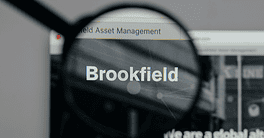Change fatigue can strain employees and organizations, and it is getting worse. To reduce the harm, companies are turning to more thoughtful, gradual strategies.
The notion that “change is the only constant” dates all the way back to the pre-Socratic Greek philosopher Heraclitus, some 2,500 years ago. But the pace of change in today’s business world often seems to outdistance the capacity of executives and their teams to adapt.
Hardly a fad pushed by human resources, the phenomenon known as “change fatigue” can affect the bottom line through workforce churn, reduced ability of workers to adapt to further change, and lower productivity.
Executives should “be treating change fatigue as a business risk,” says Hilary Richards, Vice President and analyst in Finance Practice at Stamford, Connecticut-based consultant Gartner.
Whether adopting new technologies or reacting to external change, many if not most companies appear to be in a constant state of flux. Over 75% of corporations revamp their business model every two to five years, according to a study by WalkMe, a San Franciso-based software-as-a-service firm.
Nowhere does change fatigue ring truer than in corporate finance. Finance departments field a myriad of novel strategic roles when a company implements digital transformations, enterprise resource planning, and artificial intelligence (AI).
“CFOs have pretty significant mandates to support growth, manage cash, and process change,” Richards notes. Yet, only one-third of corporate-change projects are deemed successful, according to the WalkMe report. Two-thirds of workers report burnout during transformation drives and workplace stress accounts for 8% of national healthcare spending in the US.
Another recent report from Orgvue, a London-based organizational design and planning platform, found that 38% of CEOs would rather quit than lead a major transformation.
‘Things Are Not Getting Better’
Her clients ability to adapt to change began to wane around 2017, recalls Jenny Magic, founder & CEO of Build Better Change, an Austin, Texas-based consultancy and co-author of “Change Fatigue: Flip Teams From Burnout to Buy-In.”
“Top leadership was interested, but middle managers and the people who do the work were less capable of carrying it out,” she recalls. A recently published report by her firm “validates that things are not getting better.”
Some evidence shows them getting worse.
“The average employee experienced 10 planned enterprise changes in 2022, up from two in 2016,” a Gartner report notes, “and there is no reason to expect the pace to slow. But the workforce has hit the wall; the share of employees willing to support enterprise change collapsed to just 38% in 2022, compared with 74% in 2016.”
In response, some organizations are getting creative; examples can be found among both corporate giants—Danone, Liberty Mutual—and relative upstarts. Companies opt for either change management consultants employed by big name consultancies or specialized emerging competitors. In addition to advising executives, these increasingly high-profile professionals hold conferences, provide training, and draft articles with titles such as “Three Ways to Minimize Change Fatigue Among Financial Teams.”
Large-Scale Transformation, Done Better
The solutions that consultants promote address two distinct kinds of change—large-scale transformation and accumulative change.
Major initiatives tend to favor faster speed and larger scope. Yet there are signs that more gradual solutions might be more effective and less traumatic.
These drives tend to be implemented in reaction to big external events, such as a severe economic downturn, the Covid pandemic and its fallout, or important trends in technology such as artificial intelligence. But this might reflect outdated thinking, argues Oliver Shaw, CEO of Orgvue.
“Change came along a lot less frequently” even a couple of decades ago, he says. Executives “developed impulses [to act]: ‘Change is needed now!’” As a banker who lived through the 2008 financial crisis, “I thought at the end of that, I would never see anything like it again.”
Now, supposedly one-of-a-kind events seem run-of-the-mill.
Full-bore transformation, often involving cutbacks, might be too blunt in an ever-changing world, Shaw argues. Risks include high severance pay and other costs related to large-scale layoffs. Companies in the Fortune 500 that underwent significant workforce restructuring in 2023 dished out $32.7 billion in severance pay that year and carried over another $10.9 billion into 2024 as charges or liabilities, according to data compiled by Orgvue.
Additional costs of dumping workers, according to a 2024 Bloomberg study of Securities and Exchange Commission listings, include reduced productivity (about six months); an uptick in voluntary departures; increased unemployment insurance tax; and higher legal fees, mostly to avert lawsuits over alleged discrimination.
Danone took a different path when it was contemplating a large-scale change; it used what an Orgvue case study calls a “continuous design approach to organizational development to remove the need for costly, reactive, high-risk transformation projects.” Instead of slashing jobs, the Paris-based multinational food and beverage company overhauled its human resources processes and shortened its planning period from annual to quarterly to better track labor demand and supply. They were able “to understand how [to make adjustments] through time,” Shaw says.
As with any malady, sometimes the best “remedy” is preventative medicine. When the Swedish payments fintech Klarna wanted to reduce overhead in 2023, it reduced trauma via layoffs by outsourcing about 500 jobs in 10 markets to two partner firms. Internally, it implemented a hiring freeze and embarked on a drive to adopt money-saving AI. “They are leveraging their margins by levering AI,” Shaw notes.
Danone and Klarna are examples of companies where leaders “understand organizations as systems.” If the average firm has a 15% attrition rate, according to Shaw, it should be able to milk that in tandem with internal reassignments to make significant reductions without undue trauma.
‘Slow Down Now, Speed Up Later’
After a merger, San Diego-based broker C3 Risk & Insurance Services jumped into what at first seemed like a very complex and difficult integration process. Employees fretted over their future with the firm. Nobody could agree on which technology to adopt.
Eric Brown, founder and CEO at Florida-based Imperio Consulting, was brought in to help facilitate the process. A veteran of the US Special Forces, Brown draws on that background in his practice. Instead of change fatigue, the American military calls it “operator syndrome.” Constant pressure and uncertainty can wear people down.
“The corporate world mirrors that experience in many ways,” he says, “especially in finance, with its tech overload, unpredictable markets, and ever-changing regulations. It’s like trying to stay steady on shifting sand, and it can be exhausting.”
Brown recalls telling one client, “Let’s slow down now so we can speed up later.” Soldiers think of it as a “crawl, walk, run” sequence. With buy-in from C3’s top brass, Brown was able to help incorporate that approach into the integration plan in large part by using team-building exercises and tools.
“They took it to heart,” he says, investing in training and dialogue with employees. In 2023 and 2024, C3 was tabbed as a top place to work by both Business Insurance and the San Diego Business Journal. “C3 are rock stars,” Brown adds.
C3’s experience also points up the need to address the second of the two types of change fatigue that consultants identify: the accumulation of small changes. Like water that builds up behind the proverbial creaky dam, they can ultimately threaten an organization’s structural integrity.
Employees feel increasingly harried by the nearly non-stop accumulation of relatively minor changes affecting managerial strategies, team composition, and job description, Gartner found. Employees feel disempowered by top-down change that comes without debate or discussion. Old-school burnout and increased turnover result if employees cannot recover and recharge from one disruptive event before the next one comes along.
Hoping to ward off the fatigue cycle-of-death by 1,000 cuts, Liberty Mutual designed a process to identify employees’ fears and assumptions. It started with questions aiming to help workers make peace with change. Tools included change workshops as well as employee engagement and feedback. Such initiatives can help address problems that lurk below the surface.
“Most of the senior C-suite focuses on the tip of the iceberg,” Richards says. “It’s what they’re paid for. But your team will run into that iceberg.”




